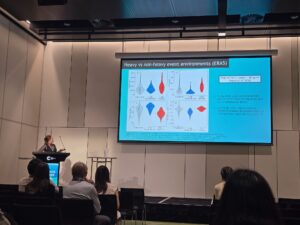
New research published in Nature Reviews – Earth & Environment and also featured in The Conversation, uses palaeoclimate data to show that megadroughts must be factored into planning for future climate conditions.

Exceptional drought events, known as megadroughts, have occurred on every continent outside Antarctica over the past ~2,000 years, causing major ecological and societal disturbances.
Anthropogenic climate change has intensified ongoing megadroughts in south-western North America and across Chile and Argentina. Future megadroughts will be substantially warmer than past events due to climate change. This will drive projected increases in megadrought risk and severity across many regions, including western North America, Central America, Europe and the Mediterranean, extratropical South America, and Australia.
Climate Futures’ researcher Dr Kathy Allen who is an ARC Future Fellow studying palaeoclimate contributed to the research through her data focusing on tree rings to understand past climate.
The research has important implications for the ways we prepare for and adapt to future changes to climate. Research indicates that while past drought has been predominantly driven by precipitation deficit, human-induced climate change will play an important role in worsening drought into the future. In a dry landscape with high temperatures and less rainfall, there is an increased risk of wildfires. In places reliant on water for energy generation, future energy supplies may also be impacted.








